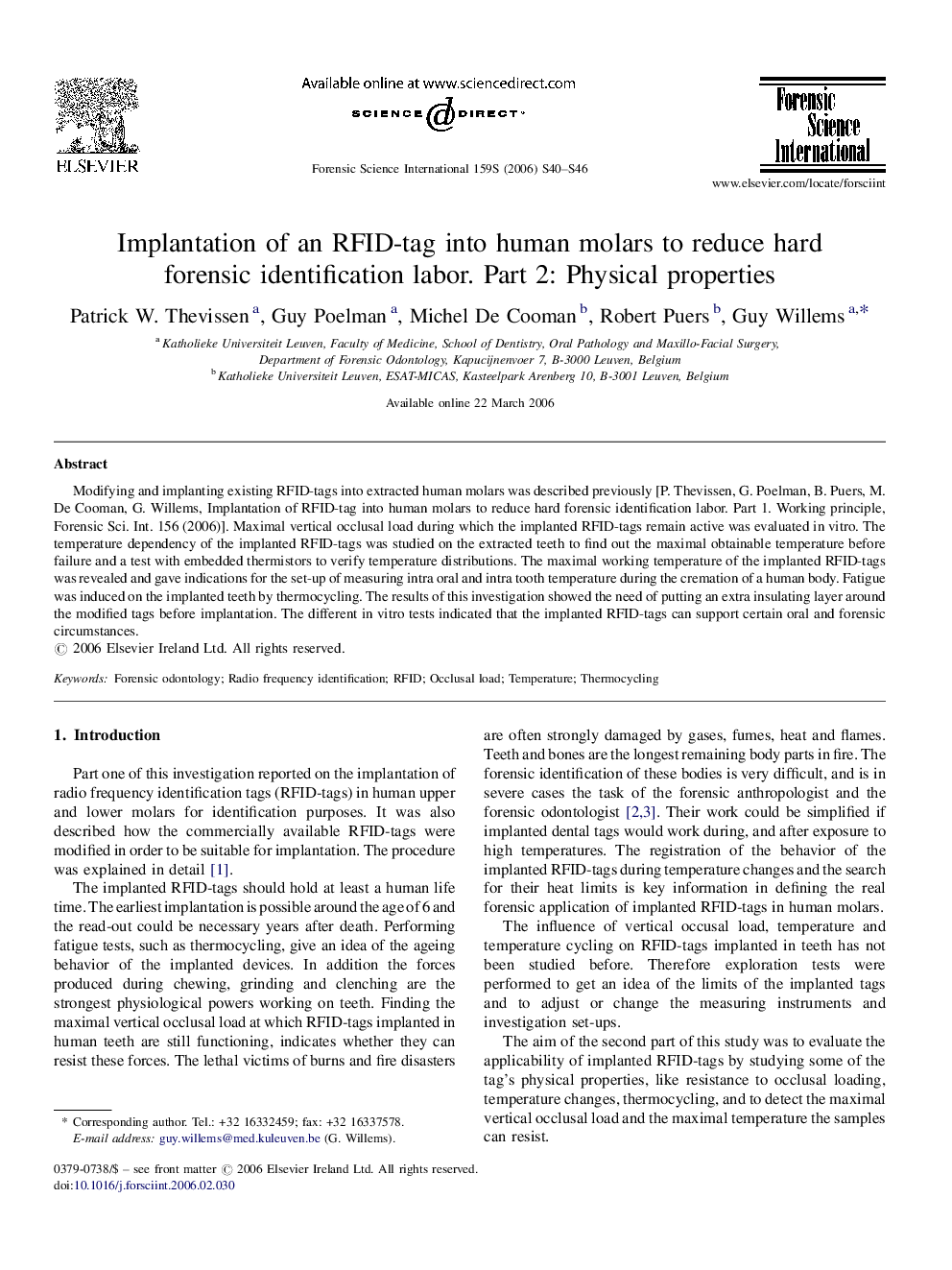| Article ID | Journal | Published Year | Pages | File Type |
|---|---|---|---|---|
| 98593 | Forensic Science International | 2006 | 7 Pages |
Modifying and implanting existing RFID-tags into extracted human molars was described previously [P. Thevissen, G. Poelman, B. Puers, M. De Cooman, G. Willems, Implantation of RFID-tag into human molars to reduce hard forensic identification labor. Part 1. Working principle, Forensic Sci. Int. 156 (2006)]. Maximal vertical occlusal load during which the implanted RFID-tags remain active was evaluated in vitro. The temperature dependency of the implanted RFID-tags was studied on the extracted teeth to find out the maximal obtainable temperature before failure and a test with embedded thermistors to verify temperature distributions. The maximal working temperature of the implanted RFID-tags was revealed and gave indications for the set-up of measuring intra oral and intra tooth temperature during the cremation of a human body. Fatigue was induced on the implanted teeth by thermocycling. The results of this investigation showed the need of putting an extra insulating layer around the modified tags before implantation. The different in vitro tests indicated that the implanted RFID-tags can support certain oral and forensic circumstances.
